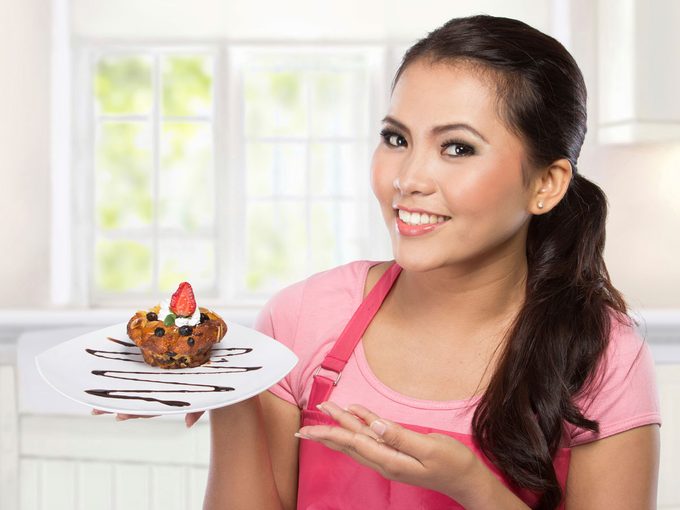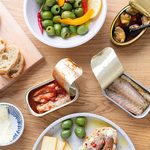Are Food Shows Causing You to Gain Weight?
Cooking competitions and food shows have gained mass appeal. But, the recipes they popularize aren’t always the healthiest. Here’s how to enjoy your favourite TV show, without the weight gain

When it comes to TV entertainment, cooking shows have wide appeal. In fact, one in ten Canadians keeps a television in the kitchen (one in five if you’re in Quebec). But maybe food television should be classified as horror. According to a recent study at the University of Vermont, women who cook meals from scratch have a higher body mass index (BMI) if they watch food shows on television.
The researchers say food shows and food blogs (another bad influence on the BMI) often push unhealthy ingredients or oversized portions. ‘I definitely think it normalizes having these desserts or casseroles,’ says registered dietitian Brooke Bulloch in Saskatoon. Tellingly, a separate British study found that recipes on TV tend to exceed the World Health Organization’s limits for calories and fat.
Stuck on keeping that TV in your kitchen? Try these six ways to keep cooking shows and blogs from driving up your weight.
1. Enjoy the food shows, not the foods they show
In the Vermont study, women who watched the food shows without actually cooking from scratch did not tend to have a higher BMI. But relying on prepared foods is not the healthiest way to have your meals. Plus TV watching in general is sedentary and linked with snacking, so it’s still a good idea to put a limit on your cooking shows.
2. Turn to better recipe sources
A lower BMI was associated with women who used recipes from family members or friends, cut them out of magazines and newspapers, or got them in cooking classes, instead of from social media or TV. There’s a difference. ‘When a recipe is on TV, they have to make sure it looks unbelievable,’ Bulloch notes. ‘And some of these blogs are so pretty, and the pictures of the food are ‘wow!’ But when women are making recipes that are passed down, it doesn’t has to look sensational, it has to taste good.’
3. Don’t get pulled in by pop culture
Just because a TV or online recipe is promoted as ‘gluten-free’ or ‘paleo,’ that doesn’t mean it’s low in calories. ‘Whether on a blog or on TV, I think these marketing buzzwords give a false sense that it’s healthier, and people tend to eat more of it,’ says Bulloch. ‘I’ve seen clients who make paleo cookies and end up having four or five a day!’
4. Check the recipe for telltale clues
How many fat-based ingredients, like butter, mayo or cheese, are in the recipe? If there are more than one or two, better think twice. Look for nutrition information posted with the recipe, and give it a pass if it’s high in sugar or sodium, or if a single portion is packed with calories. Your best bet are recipes with whole-food ingredients, instead of those that use salad dressings, canned soups or boxed crackers.
5. Focus on frequency and portion control
Cooking from a high-calorie recipe isn’t the end of the world if you do it occasionally and sensibly. ‘It really comes down to portion size and frequency,’ says Bulloch. ‘If I’m going to be making dessert, I want it to be good. I’m going to be using pretty much all the fat and sugar that’s called for, but I’ll be mindful of portion size.’
6. Learn from experience
The more you experiment with recipes and healthy eating, the more you’ll learn about what to look for in a first-rate recipe. Bulloch says she often combines two recipes to get the ingredient and taste balance she’s looking for. Cornell University’s Food and Brand Lab recently showed that women who enjoy trying a wide variety of foods seem to eat better and weigh less than those who are less adventurous.
So don’t be put off on cooking from scratch ‘ just be aware of your recipe sources. ‘We are really trying to get people to get back into the kitchen,’ says Bulloch. ‘Cooking at home more, using more from-scratch foods, is better for your health and weight status.’




